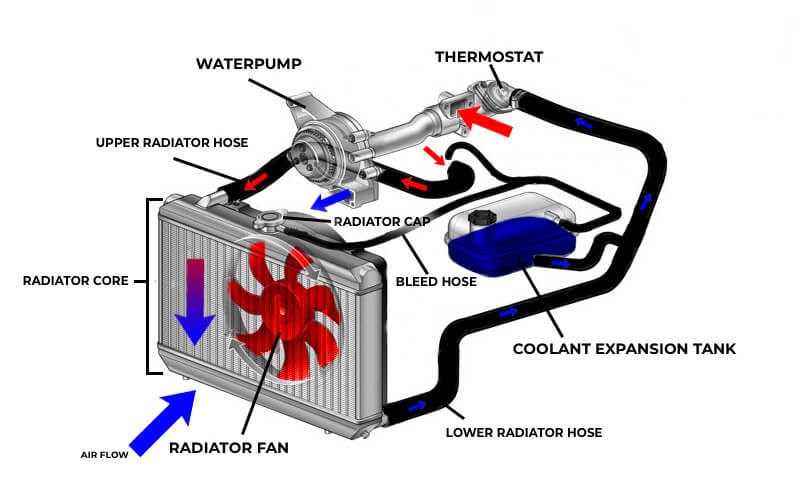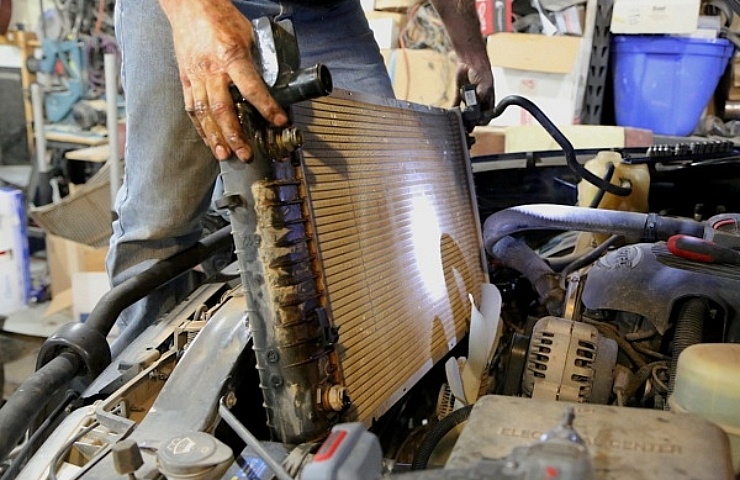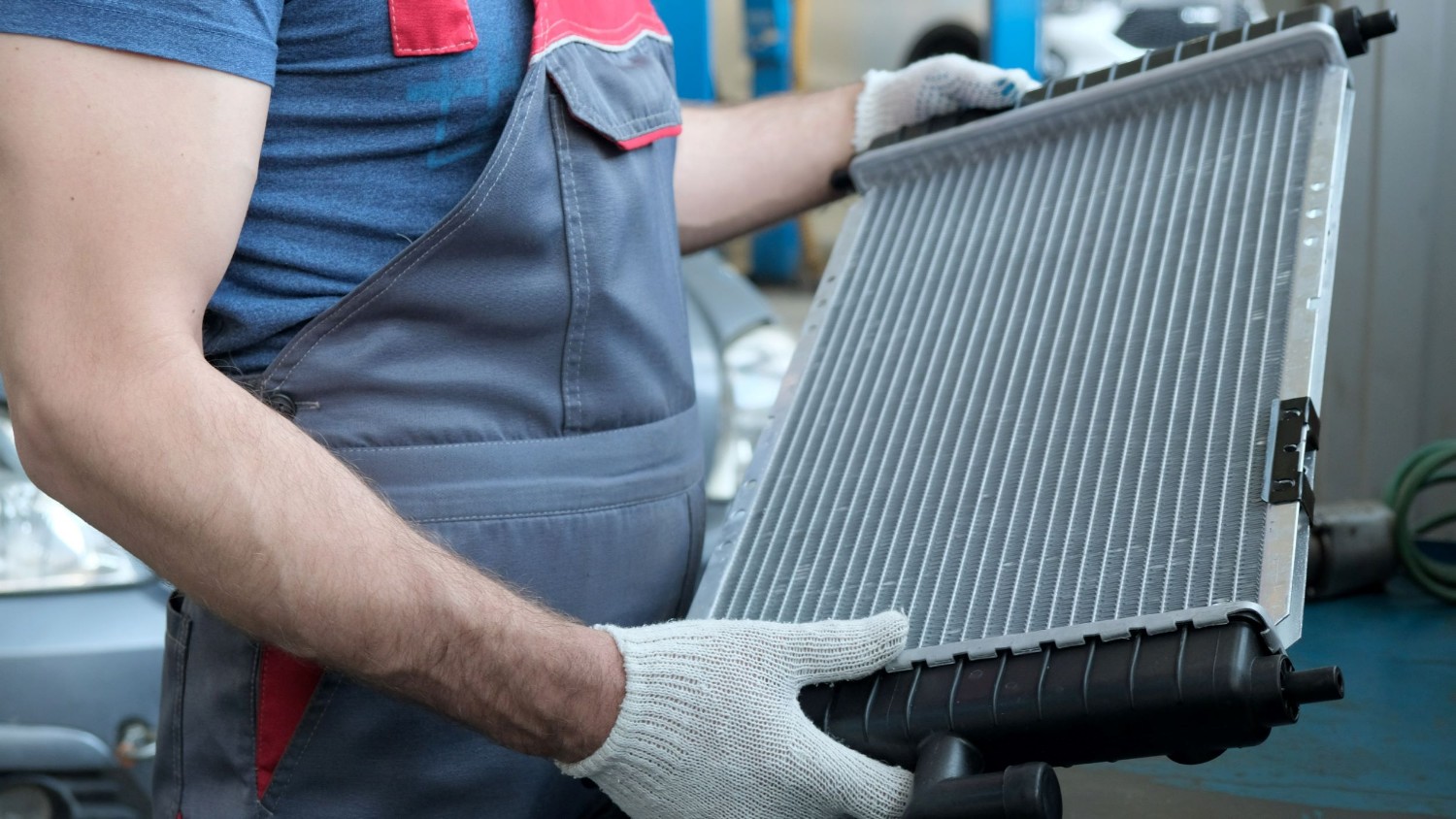Automotive News: How Does a Car Radiator Work?
In today’s “Know Your Car” article, we’re going to cover the very basics of how a radiator works and give you some possible tell-tail signs that warn you of an issue in the system.
We don’t all need to be engineers and mechanics, but having some basic knowledge of how your car’s engine and other parts operate is suggested, especially if you’re stuck and need to diagnose the issue yourself.
What is a car radiator?
A radiator is a component of a car that’s designed to cool an internal combustion engine. You’ll usually find them being used in machinery that heats up a lot, like a combustion engine. These days, you’ll find that cars, motorbikes, aircraft, and even trains have radiators. In cars, the radiator is usually positioned right at the front, with a fan to draw in air even when the car is not moving. Let’s take a look at how it works.
How does it work?
Modern car cooling systems comprise a few parts, of which the radiator is the most important. Mounted at the front of the car, the radiator is easily identified by the flat plat-like structure with different channels running through it. The channels are known as the water jacket.

As fluid flows through these channels, they take away heat from the engine, keeping it cool enough to function without issue. How the radiator does this is fairly simple. While you drive, the car pulls in air, which cools the tubes in the radiator with coolant in them. At the same time, the hot coolant gives off heat. As the two collide, they force the temperatures to equalize, making the coolant cooler and dispersing the heat through the radiator.
So what happens when the car isn’t getting air while stationary? Well, this is where the fan comes in. The fan is activated when the car is stationary to keep the same process going, so the car doesn’t overheat.
What materials are used
Aluminum:
The most common material today due to its lightweight construction, good heat conductivity, and corrosion resistance.
Copper-Brass:
Copper was once used as the standard material but has been replaced by other materials like aluminum lately. These are still used in some classic cars and heavy-duty applications due to their exceptional heat transfer properties. However, they are heavier and more expensive than aluminum ones.
Other Materials
The car’s radiator is typically built with strong, lightweight metals like aluminum. However, the automotive industry is constantly innovating with materials. Kevlar, a synthetic material known for its incredible strength and minimal weight, is also finding a new role in reinforcing vulnerable components like radiator hoses.
Similarly, the production of radiator grilles is embracing advancements. Foamed polypropylene (EPP) is gaining popularity due to its impressive ability to absorb impact energy while remaining lightweight. This translates to a lighter overall car weight and improved safety in the event of a collision.
Different types
Car radiators come in various types, but they all share the same core function: transferring heat from the engine coolant to the surrounding air. Here are the most common ones:\
Downflow
This is the most traditional type, and it is also commonly found in older vehicles. Coolant enters from the top tank and flows vertically down through tubes, while air passes horizontally through fins for the heat exchange.
Crossflow
The most widely used radiator today, especially in modern vehicles. Coolant enters one side of the tank and flows horizontally across the tubes, while air flows vertically through the fins.
Dual-Pass
This kind of radiator is a variation of the crossflow type, where coolant makes two passes through the core for even more efficient heat transfer. This is often used in high-performance vehicles or those operating in hot climates.
Performance
These are heavy-duty radiators designed for high-performance vehicles that generate a lot of heat. They may have larger cores, thicker tubes, and additional fins for improved cooling capacity.
Electric Vehicle
While electric vehicles don’t have combustion engines, some of them still use radiators to cool battery packs and other electrical components. These radiators are usually smaller, compact and can work with a small battery pack.
Signs that your radiator is damaged
We’ve already established how important your radiator is in a car. If the radiator gives out, this could cause your engine to overheat, resulting in a number of different problems. Here are a few signs that’ll indicate if there’s an issue with your car’s radiator:
- Engine overheating: this is a common issue and will often show on your dashboard
- Coolant leak: You’ll notice this by seeing little pools of yellow or green liquid under your car. This might also result in your car running hotter than usual
- Low coolant levels: your coolant reservoir should always be at the same level; if it’s showing that you have less coolant, then there might be a leak
- Damaged radiator fins: The fins in front of the radiator can become clogged, dirty or bent, which will impact the functionality of your radiator
When does a radiator need to be replaced?
Radiators have a relatively good life span, with most of them lasting between 10 to 15 years if not damaged. However, they eventually get dirty or clogged over time and receive damage which lessens their lifespan.

In situations where your radiator is damaged, for instance, say the fins are bent. Then the solution would be to replace it usually. In some cases, radiators can be repaired like if there’s a coolant leak in a pipe. But in cases where the radiator can’t be repaired, it’ll need to be replaced.
Final Thoughts
Thanks to radiator technology, cars have better and better cooling systems these days. These cooling systems play a big role in how well the car runs, so it’s important to ensure they’re functioning correctly and to know when they are not.
